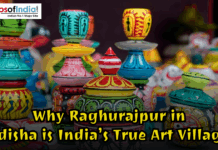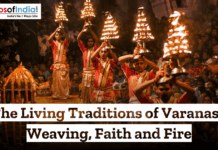Janmashtami is the most popular and colourful festival in the Hindu culture, which is the birth anniversary of Lord Krishna, the eighth incarnation of Lord Vishnu. It is celebrated on the eighth day (Ashtami) of Krishna Paksha in the month of Bhadrapada and is a great fusion of all devotion, music, dancing and tradition. Janmashtami in 2025 will be celebrated on 16 August, 2025 with a lot of jubilation in India and among the devotees of Krishna all over the world, as it is a union of spiritual elation and cultural richness.
The Significance of Janmashtami
Lord Krishna is a mythological hero in the Hindu folklore as a god of strategy, philosopher and a dharma guardian. His life, his performance as represented in the Bhagavad Gita and Bhagavata Purana, is replete with teachings on his great message of love, duty, and righteousness. This is because during the birth of the Hindu god in Mathura more than 5,000 years ago on the feast of Janmashtami, it is believed the occurrence was fated to the downfall of the evil forces and the re-establishment of harmony.
The festival is not only a religious occasion, but it is a cultural event that unites the communities singing hymns of devotion, acting episodes of the life of Krishna, and commemorating by means of enjoying feasts.
Celebrations Across India
Mathura and Vrindavan: The Heart of Janmashtami
Mathura, the birthplace of Lord Krishna and the neighbouring town of Vrindavan, where he grew up. Those towns will attract lakhs of devotees across the country and overseas in 2025. The places of worship, such as Krishna Janmabhoomi Mandir and Banke Bihari Temple, will be decorated colourfully with lights and flowers.
In this venue, the festivals are held over days, which are characterized by Ras Leelas (dramatic reenactments of the life of Krishna), spiritual singing, and midnight ceremonies, which state the precise hour of birth of Krishna. Streets are flooded with pilgrims chanting Radhe Krishna and taking part in a procession with decorated idols.
Dahi Handi in Maharashtra
The word Dahi Handi is associated with Janmashtami in Maharashtra. A Dahi Handi is an exciting event based on young Krishna’s liking to eat butter. Teams of young people, known as Govindas, are encapsulated as human pyramids, breaking a pot filled with curd, butter or milk that is suspended some feet in height above the ground. It is not a simple demonstration of strength and cooperation, but also a vivid community event that includes music, dancing, and applause.
By 2025, Mumbai, Pune, and Thane in particular will have massive Dahi Handi contests, and pro participants will compete to win the prizes and the accolades.
Gujarat: Dwarka’s Divine Celebrations
The celebrations in Gujarat, especially Dwarka, which is believed to be the kingdom of Krishna, are very much spiritual. The Dwarkadhish Temple is the focus of devotions; it is adorned, special aartis are done, and processions are also carried out. People come in numbers to the temple at a very early hour, with pilgrims and devotional singing going throughout the night till the birthday hour of Krishna comes.
North India: Temple Festivities and Fasting
Janmashtami is also celebrated with day-long fasting, visiting temples and devotional singing in the states of Delhi, Uttar Pradesh, Punjab and Haryana. Jhankis (tableaux) showing scenes of the childhood of Krishna stealing butter, playing the flute or dancing with the Gopis are hung in the temples. Many families remain awake till midnight and play aarti and give prasad.
South India: Unique Rituals and Offerings
The festival in Tamil Nadu, Andhra Pradesh and Karnataka commemorates Krishna coming into the house as people draw their small footprints leading to the puja room. Believers use native desserts such as seedai, murukku in their offerings. Travelling to Udupi, Karnataka, the grand Krishna Mutt temple opens a centre of devotional practice, and a flock of thousands of pilgrims come to visit it.
Janmashtami Beyond India
Janmashtami is not celebrated only in India, as the Indian diaspora, as well as the followers of Krishna located in other countries, who also commemorate this holiday.
United States
Temple and cultural organizations in America host grand events of Janmashtami in cities such as New York, Chicago and Los Angeles. The International Society for Krishna Consciousness (ISKCON) is a major organization promoting Krishna devotion and organizing kirtan (devotional singing) and lectures, and drama productions. Midnight aarti gets hundreds of people, and prasad is distributed to all the guests.
United Kingdom
ISKCON has one of the largest venues for the celebration of Janmashtami outside India at the Bhaktivedanta Manor in London, donated by musician George Harrison of The Beatles to ISKCON. The festival brings tens of thousands of people to the manor as processions, cultural shows and giant decorative art installations tell the tale of Krishna.
Nepal
Janmashtami is a national festival in Nepal for long-established followers. The followers are supposed to do fasting, go to temples devoted to Krishna and repeat the verses of the Bhagavad Gita. The Krishna Mandir in Patan, Lalitpur, turns into a centre point of worship where those worshipping gather from all parts of the country.
Fiji, Mauritius, and the Caribbean
Janmashtami is also celebrated with a visit to temples, chorus singing and devotional talks in the countries in which a large Indian-origin population lives, such as Fiji and Mauritius. The practices in Trinidad and Guyana have all-night satsangs and bhajan sessions as part of the celebration.
Australia and New Zealand
Janmashtami is celebrated in ISKCON temples in Sydney, Melbourne and Auckland with its traditional Indian decorations, food stalls, and cultural performance. There is a multicultural celebration with the fusion of the Indian communities with the local inhabitants.
Rituals and Practices in 2025
Although local differences apply, some of the rituals are similar across the board at the Janmashtami festivals:
- Fasting: The believers fast, and the fast only breaks during midnight after Krishna is born.
- Abhishekam: A bath of milk, honey, ghee and water is given to the idol of Krishna, followed by a new set of clothes and adornment of jewels.
- Chanting and Kirtans: Devotional songs can be heard in the temples or at home, which makes them full of joy and reverence.
- Jhankis: Episodes of the lives of Krishna are depicted in creative ways, and visitors flock in, sometimes even international visitors.
- Midnight Aarti: This is the high point of spirituality and a signal of the divine arrival of Krishna.
Janmashtami 2025: A Modern Touch to Tradition
Technology has, in recent years, led to Janmashtami festivities reaching larger groups of people. Aartis being live-streamed, darshan that is virtual, and satsangs on the internet enable devotees around the world to do so in the comfort of their homes. The online social sites are full of adorned temple photos, religious quotes and Krishna bhajans.
It is projected that several temples will engage immersive technology, such as augmented reality, to narrate the life of Krishna in 2025 to make the stories more interesting to younger generations. Green decorations, no plastic Dahi Handi, and organic goods are coming into fashion too, as society is trying to combine emotions with nature care.
Conclusion: A Festival of Joy and Unity
The Janmashtami in 2025 will bring millions of people together on the way of devotion, delight, and anniversary. Be it in the teeming lanes of Mathura, quiet temples of Dwarka or distant regions where Krishna is praised in various and multiple accents, the spirit is the same: the worship of the divine, gaiety in music and dance and adherence to the morals that Krishna did advocate.
Bells will be rung, conches will be blown, and cries of Hare Krishna will fill the air at the stroke of the midnight hour- reminding all that there is more to Janmashtami than rituals and festivities, that is the everlasting relationship between the soul and the divine.





